Students from Inland Northwest compete at annual International Science and Engineering Fair

A group of five high school students from Spokane, Spokane Valley and Odessa recently trekked to the annual International Science and Engineering Fair in Phoenix that brought together 1,800 students from 80 countries.
The students all participated in the Eastern Washington Regional Science and Engineering Fair for students in grades 6-12 from Spokane, Lincoln, Whitman, Pend Oreille, Ferry and Stevens counties. Each student had to complete a project and then present it to a panel of judges.
Sarah Mahan and Erin Hucke, both seniors at Ferris High School, researched the use of Caenorhabditis Elegans as an indicator for toxins in feminine hygiene products. Caenorhabditis Elegans are microscopic worms that have an unusual reaction to toxins and contaminants; they convulse and their back end stops moving, Mahan said.
The students bought three brands of tampons to test and were surprised at the results. “That happened in all three types that we had,” she said.
“A lot of them died,” Hucke said.
The duo said they picked tampons to research because manufacturers don’t have to disclose the ingredients or what processes are used to make the product.
“They have so few regulations it’s kind of scary,” Hucke said. “Women really have no clue what’s going in their body.”
The students said they weren’t able to test to determine what kind of toxins were present, but each said they’d like to continue their research next year when they’re at college. Mahan plans to study biology or bio chemistry at the University of Washington and Hucke plans a double major in Spanish and chemistry at the University of Portland.
They often joked with their teacher during the year that they were going to go to the International Science Fair, but neither one actually expected to go. “We had no expectations,” Mahan said.
Their project was picked to be in the top four at the regional competition, qualifying them to attend the state competition and the international competition. They placed in the top 20 of 200 high school projects at the state competition. They didn’t win anything at the international competition, but neither minds.
“You already won by being there,” Hucke said.
Hucke said she was amazed at some of the projects her fellow high school students from around the world came up with. “Kids are doing amazing things in science,” she said. “It’s just so inspiring.”
Mahan agreed and said she was in awe from the day she walked in the door. “Being put on the same level as some of those projects and some of those kids was an honor,” she said.
Jake Satake, a junior at North Central High School, studied mice to see if he could determine what genes cause Type 1 diabetes. He was diagnosed with the disease when he was 13. Unfortunately, Satake had problems with the gene sequencing and wasn’t able to make a definitive determination, but he plans to revisit his project next year.
“I’ll expand my research and hopefully find a cure,” he said.
Finding a cure is important not just for people like him, but for people in areas without access to insulin for whom diabetes is a death sentence, he said.
Satake said he didn’t know when he was going to the regional science fair what he was getting into. He simply told his parents he was going to present his project. “I didn’t know what was on the line,” he said. “I didn’t even think I’d make the top of anything.”
He said he enjoyed the international competition, especially event where students exchanged pins representing their country or state. There was even time to hang out at the pool, though the students used that time to rehearse their presentations.
“We got to meet a whole bunch of really cool people,” he said. “It was a lot of fun. I got a lot of good experience.”
Satake’s project didn’t win anything at the international competition, but he said that doesn’t matter. “It’s an accomplishment in itself because not everyone gets that experience,” he said.
Central Valley High School student Ansel LaPier studied the arm strength of patients after open heart surgery and how to improve outcomes after surgery. He won a $750 award from the Air Force Research Laboratory. Odessa High School student Josie Westmoreland researched the environmental effects of brake dust released into the air every time people use the brakes in their cars.
Attending the International Science and Engineering Fair wasn’t possible for local students until recently because the Eastern Washington Regional Science and Engineering Fair didn’t exist. It was started by Ray Koelling, a research scientist who moved to Spokane from Seattle in 2017 after he retired. He served on the board of the Washington State Science and Engineering Fair and when his fellow board members heard where he was moving to, they asked him to use his newly found free time to start a regional science fair.
Koelling said he’d also been helping out with science fairs in the Seattle area for many years. “I was involved in educational outreach,” he said. “I’ve had a lot of good experiences in science and I want to help the kids.”
Careers in science, technology, engineering and math are the future, he said, and students need to be prepared for that. “They need help,” he said. “I’ve got the time and the expertise. It’s my contribution to society, however large or small it is.”
Koelling has also been working to gather sponsors to pay for the students’ trip to the international competition and line up mentors the students can work with and learn from. Schweitzer Engineering Laboratories, based in Pullman, has been paying the travel cost of each student attending the international competition, he said.
“They paid this year, they paid last year and they said they’d pay next year,” he said. “They’re incredible. Without them, this wouldn’t happen.”